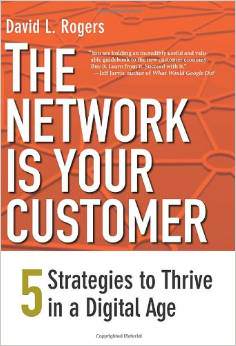Standing Tall Above the Digital Crowd
Gone are the days when a techie or a genius could build things in his garage and customers would find and buy the product, based purely on the “wow factor” of the technology. New technologies are everywhere today. People have seen so much that they aren’t impressed anymore, and fully expect the impossible to appear tomorrow.
They are overloaded by the media with amazing advertising messages, and people now realize that you can’t believe anything you see in pictures, and even videos can be edited to deliver any message. In fact, we are all media companies now, with our cell phones, computers, and professional-looking publishing tools.
Thus customers and partners rely more and more on personal engagement with people. Social media, like Facebook, allow them to convince themselves that they are engaging on a personal level, even when they aren’t. They definitely look for more personalization, and more “me, myself, and I” in the message.
David L. Rogers talks about this phenomenon in his book, The Network is Your Customer: Five Strategies to Thrive in a Digital Age, and suggests some strategies to improve your perceived engagement level. I’ve focused these more towards startups and entrepreneurs:
- Show a personal face. Engage customers by showing a personal side and an authentic voice in digital content rather than the objective and authoritative voice of an institution. That means a startup should never use the old-fashioned anonymous website, with no names, addresses, or personal pictures. Show people you are an engaging real person.
- Focus on each particular segment and need. Focus on niche audiences and their specific needs and interests, rather than trying to engage every possible customer with the same content. Use the power of available tools to provide video, interactive, and highly targeted messages to each segment of your audience, and each business partner.
- Try branding yourself, not selling a product. Offer a story, entertainment, or a compelling idea that you can link convincingly to your brand, rather than trying to sell products or services directly. People buy from people, and in a startup, you are the brand. Sell yourself as the expert, and business sales will follow.
- Offer utility to each audience member. Provide content and interaction that helps solve a problem or answers a critical information need for your audience. Avoid the abstract value calculations that don’t apply to the segment you are addressing. Use the power of the new media to deliver the right message to the right customer at the right time.
- Make it an enjoyable experience. Use the interactive, goal-based play of online games to engage customers for fun, education, and relationship-building. People today are used to multitasking and have very short attention spans. Keep the messages short and sweet.
As digital media continues to evolve, you have to change your content rapidly to keep up. Shorter books, for example, transfer better to phones and other modern reader devices. Links and interactivity become more important as high-speed Internet access becomes pervasive on more devices and appliances.
The key is an ongoing engagement strategy, producing relevant, sensory, and interactive content that is at the heart of your customer networks. So start now to think of your startup as a media company, rather than an outsourcer of advertising from some anonymous experts. If you can build a product, but not a brand, then you are not quite ready to start a business today.

